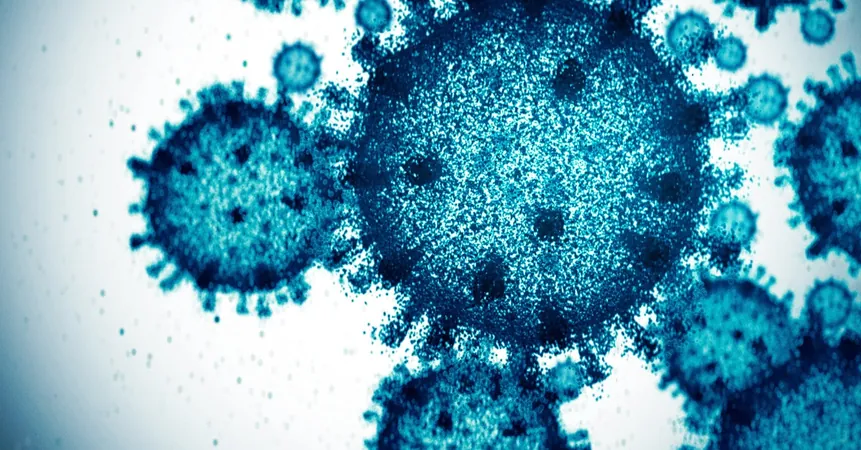
The Rise of COVID Variant NB.1.8.1: What You Need to Know!
2025-06-07
Author: Ling
A New Threat Emerges in the U.S.
A fresh COVID variant, NB.1.8.1, has recently appeared in the United States, having first been detected in China in January. Alarmingly, this variant now represents 10% of global SARS-CoV-2 sequences, a notable increase from just 2.5% four weeks prior.
Monitoring the Variant
The Centers for Disease Control and Prevention (CDC) remains in close contact with international partners regarding the spread of NB.1.8.1. Currently, only 20 cases have been identified in the U.S., which is below the threshold for it to be reported on the CDC's COVID dashboard. However, experts say that as its prevalence grows, it will inevitably show up on the radar.
Symptoms: What’s the Same?
Despite the emergence of this new variant, infectious disease experts assert that its symptoms are largely consistent with those from earlier COVID variants. Dr. Zachary Hoy from Pediatrix Medical Group notes that the hallmark symptoms remain—a mild yet persistent dry cough and nasal congestion.
Patients often experience fatigue, sore throat, muscle aches, fever, and chills. Interestingly, some reports suggest that the symptoms from this latest variant might feel less intense than those from previous winter influenza viruses, although severe cases can still arise.
How Does It Spread?
Researchers believe that NB.1.8.1's mutations—particularly on its spike protein—may make it more transmissible. According to the World Health Organization (WHO), these genetic changes could potentially enhance the virus's ability to latch onto our cells and evade certain immune responses.
Vaccine Effectiveness Against NB.1.8.1
It's still early to definitively assess the efficacy of current vaccines against NB.1.8.1, but experts are optimistic. Since this variant is a descendant of the Omicron lineage, scientists anticipate that immunity, especially against severe illness, will remain robust. This is particularly crucial for vulnerable populations.
When to Seek Medical Advice
For the majority, recovery can be managed at home with rest, hydration, and over-the-counter pain relief. Symptoms typically resolve within a week. However, individuals at risk—such as older adults or those with compromised immune systems—should consult a physician promptly. Antiviral medications like Paxlovid can significantly lessen complications if administered early.
Signs That Demand Immediate Attention
Know when to get help! Urgent care should be sought if you experience chest pain, extreme fatigue, or confusion. The most serious warning sign is difficulty breathing. If your symptoms worsen significantly, it’s critical to get evaluated!
Staying Informed and Prepared
As NB.1.8.1 begins to spread, staying informed is your best defense. Continue monitoring your health, adhere to public health guidelines, and keep up with vaccinations to protect yourself and loved ones.



 Brasil (PT)
Brasil (PT)
 Canada (EN)
Canada (EN)
 Chile (ES)
Chile (ES)
 Česko (CS)
Česko (CS)
 대한민국 (KO)
대한민국 (KO)
 España (ES)
España (ES)
 France (FR)
France (FR)
 Hong Kong (EN)
Hong Kong (EN)
 Italia (IT)
Italia (IT)
 日本 (JA)
日本 (JA)
 Magyarország (HU)
Magyarország (HU)
 Norge (NO)
Norge (NO)
 Polska (PL)
Polska (PL)
 Schweiz (DE)
Schweiz (DE)
 Singapore (EN)
Singapore (EN)
 Sverige (SV)
Sverige (SV)
 Suomi (FI)
Suomi (FI)
 Türkiye (TR)
Türkiye (TR)
 الإمارات العربية المتحدة (AR)
الإمارات العربية المتحدة (AR)